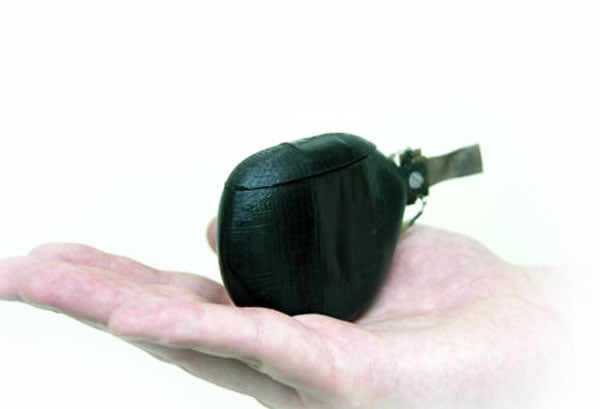A new robot fish has been developed by researchers at NYU-Poly’s Dynamical Systems Laboratory to help control the paths of schools of fish. The new robot fish will be able to help steer schools of fish away from hydroelectric turbines, oil spills, and other dangers to safety and potentially has many other applications.

Innovative Propulsion Systems
The innovative propulsion systems used in the robot fish were developed by biomimicking various fish and researching energy harvesting in aquatic environments using ionic polymers. This technology allows the robot fish to eventually run on energy from eddies and small vibrations underwater. By mimicking the natural movements of real fish, the robot fish can blend seamlessly into schools of fish, making it an effective tool for guiding them away from hazardous areas.
The use of ionic polymers is particularly groundbreaking. These materials can convert mechanical energy from the environment into electrical energy, which means the robot fish could potentially operate for extended periods without needing an external power source. This self-sustaining feature is crucial for long-term applications in remote or hazardous environments where regular maintenance is not feasible.
Species-Specific Design
To control different species of fish, a new robot fish will need to be constructed and programmed to mimic each individual species. Different fish species have unique swimming patterns, behaviors, and social structures. For instance, the way a school of tuna moves is quite different from how a group of sardines behaves. Therefore, the robot fish must be adaptable and capable of mimicking these various behaviors to be effective.
In these early stages, the robo-fish can only swim in straight lines, and more development work is required before it can learn to swim into deeper depths or actually break the surface of the water. Future iterations of the robot fish will need to incorporate more advanced algorithms and sensors to navigate complex underwater environments and respond to the dynamic behaviors of different fish species.
Potential Applications
The potential applications for this technology are vast. Beyond steering fish away from hydroelectric turbines and oil spills, the robot fish could be used in environmental monitoring. For example, they could help track the health of fish populations, monitor water quality, and even assist in marine research by providing real-time data on underwater ecosystems.
Another exciting application is in the field of aquaculture. Fish farms could use robot fish to manage and control the movement of fish, ensuring they stay within designated areas and reducing the risk of escape. This could lead to more efficient and sustainable fish farming practices.
Moreover, the technology could be adapted for use in other aquatic animals. For instance, similar robotic systems could be developed to guide and protect marine mammals, such as dolphins and whales, from dangers like ship strikes and fishing nets.
Challenges and Future Development
Despite the promising potential, several challenges remain. One of the primary challenges is the need for more sophisticated control systems that can handle the complex and dynamic nature of underwater environments. Additionally, the robot fish must be durable enough to withstand harsh conditions, such as strong currents and varying water temperatures.
Researchers are also exploring ways to make the robot fish more autonomous. Currently, the robot fish requires some level of human intervention for operation and navigation. Future developments aim to create fully autonomous systems that can operate independently for extended periods.
The development of the robot fish by NYU-Poly’s Dynamical Systems Laboratory represents a significant advancement in the field of biomimetic robotics. With further research and development, this technology has the potential to revolutionize how we interact with and protect our aquatic environments.
Via Botjunkie
Latest Geeky Gadgets Deals
Disclosure: Some of our articles include affiliate links. If you buy something through one of these links, Geeky Gadgets may earn an affiliate commission. Learn about our Disclosure Policy.